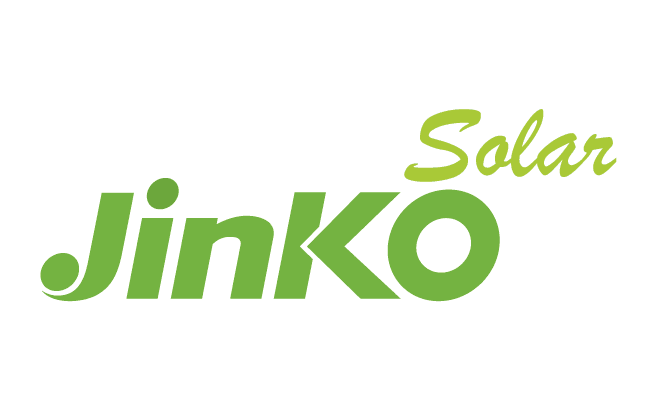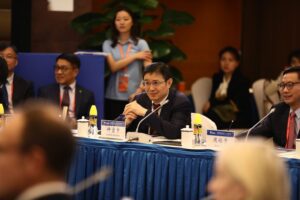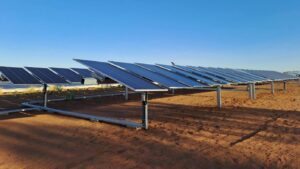PRESS RELEASE
On November 12.2020, the “Customer Value Focused, Advanced PV Technology for Better LCOE-182mm Module and System Technology” Conference, co-sponsored by JinkoSolar, JA Solar and Longi Green Energy, was successfully held in Shanghai. During the conference, solar inverter and tracker manufactures, power design institutes, EPC enterprises and third-party certification institutions issued a comprehensive statement on the design, production cost, supporting infrastructure, system application and product certification of the 182mm modules.
With the arrival of the grid parity era, the industry has recognized the benefits of deploying high-power modules in large sizes for their ability to reduce the LCOE. However, larger modules sizes come with more technology challenges.
Ji Zhenshuang, deputy director of China General Certification, said at the conference, “Larger size brings higher modules power, but industry participants should also pay attention to the industry’s supply chain and system security. In particular, a constraint condition should be set to maintain safety and reliability in terms of electrical parameters. At present, as the modules remain in a rapid transition period, serialization and standardization under gradual adjustment would further contribute to the development of to the solar industry.”
“The increase in modules size requires consideration of a number of factors, ranging from modules circuit design, component matching design, reliability to process capability, packaging and transport, system design, and post-operation and maintenance.” said Zou Chicheng, Vice President of TUV Rhein. Zou suggested that enterprises seek an optimal solution between size and safety from the perspective of certification.
Li Shaotang, Senior Product Manager of Longi Solar, commented, “As early as 2018, the industry came out with the idea of having larger module size to increase the power. However, larger size doesn’t mean better performance. Various boundary conditions for thorough consideration include manufacturing, transportation, reliability and manual installation. The 182mm modules effectively support the existing industrial specifications and electrical system. Additionally, in terms of LCOE, 182mm modules are superior to 210mm due to lower system cost, better generation capacity and reliability. The former is optimal for large-scale ground-mount power plants with flat terrain.”
Meanwhile, the industry has increasingly realized the cost savings with larger modules sizes. Yu Hanbo, Senior Manager of Global Products at JinkoSolar, said, “Improving power generation by reducing line loss and internal loss is one of the ways to reduce costs. Compared with 210mm modules with the 55P version, 182 mm modules can reduce line loss by 0.21% and internal loss by 2%, which represents a reduction in EPC cost by more than 0.1 yuan/watt. On the BOS cost side, the 182mm could provide approximately 2.6 cents/watt of savings compared with 210mm. When comparing different dimensions of electric cost, BOS cost and IRR, 182mm products are the best choice.”
With the benefit of advanced 182 products package, the modules have gradually entered into the mass production phase.
“The crystal-pulling rate of 182mm is basically the same as 158mm, and there is still room for further improvement. The slicing rate is slightly lower but will soon reach parity with the 158mm wafers, and the cell efficiency can increase to 23.1% through the optimization process of each link. At present, the mass production efficiency has reached more than 21%. In terms of transportation, compared with 158/166 products, each container for 182 products can be loaded with about 10% ~ 20% watts more.” said Monsoon Wang, Senior Vice President Assistant and Senior Product Technician of JA solar. More importantly, 182mm products have a number of qualified suppliers in each of the processes, including crystal-pulling, slicing, cell and module manufacturing. It is estimated that in 2021, the production capacity of pull crystal-pulling, glass and film for the 182mm products will be more than 50% of the industry’s full capacity, and the proportion of pulling crystal will be as high as 91.7%.
As for the inverters, Huawei and Sungrow, the two leading manufacturers, indicated that related products can support 182mm modules comprehensively. According to Gan Binbin, Global Solutions Director at Huawei, the high-power modules bring forth the challenge of matching the maximum current of the inverter MPPT with the working current of the modules. In addition, the reliability risks of crack, hot spot and diode also increase. However, Huawei’s products can fully support all modules and utilize AI BOOST’s intelligent algorithms and diagnostics to effectively reduce cost and increase efficiency.
Zhang Yanhu, Vice President of Sungrow, said, “The rise in module current will increase the diameter of low-voltage DC cables, thus driving up the material cost. At the same time, excessive variation of modules current will also affect the performance of string inverters and combiner boxes. While centralized inverters can be flexibly adapted to various versions of modules, the DC combiner boxes can be adapted to 182mm and 210mm modules.” As a representative of power station integrator, Zhang calls for the industry to standardize module size, improve system compatibility, and focus on improving the efficiency of cells and modules in the next step to embrace the grid parity era.
For the PV tracker, Guo Zhikai, Senior Product Director of NEXTracker, said, “Tracking system has met one challenge after another as solar modules upgrade. For today’s 182mm module, 1P/NX Horizon and 2P/NX Gemini products are fully compatible with its 72-cell version. The 78 version modules can further reduce costs, and solar module load values have been confirmed, which covers 100% of the project requirements. In terms of reliability, it has passed the new wind tunnel test, and even the largest module size can ensure its stability on the tracker.”
The coordinated operation of the photovoltaic industry chain will accelerate the adoption rate of 182mm modules, but the ability to reduce costs and increase efficiency requires further guidance from professionals of the design institute.
In response, Huang Chunlin, the Secretary of the Party Committee of new Energy Engineering Academy, Huadong Engineering Corporation limited, said “With the release of the capacity ratio limit, higher module power requires fewer strings and at the same time enables expected capacity ratio. 182mm 585W modules with 14 strings will get a 1.1 capacity ratio. When the Y type terminal is adopted, the ratio will be even higher.”
Huang continued, “However, due to high current adaptation issue, inverters with single MPPT connected to a string of modules are the only type of existing inverter products that can be used to avoid the loss of high current, and the capacity ratio can only achieve 0.9x at most. In addition, larger current means more line loss or increased cable investment cost, while larger modules also increase the tracker capacity. The 182mm modules have a relatively high matching capability with the tracker.”
In 2021, the combined manufacturing capacity of the three leading manufactures is expected to reach 54GW, which provides confidence for the market. With strong support from JinkoSolar, JA Solar and Longi, the182mm modules are expected to make significant contributions to the PV market in 2021 with production ramp, enabling the industry to achieve overall grid parity.










